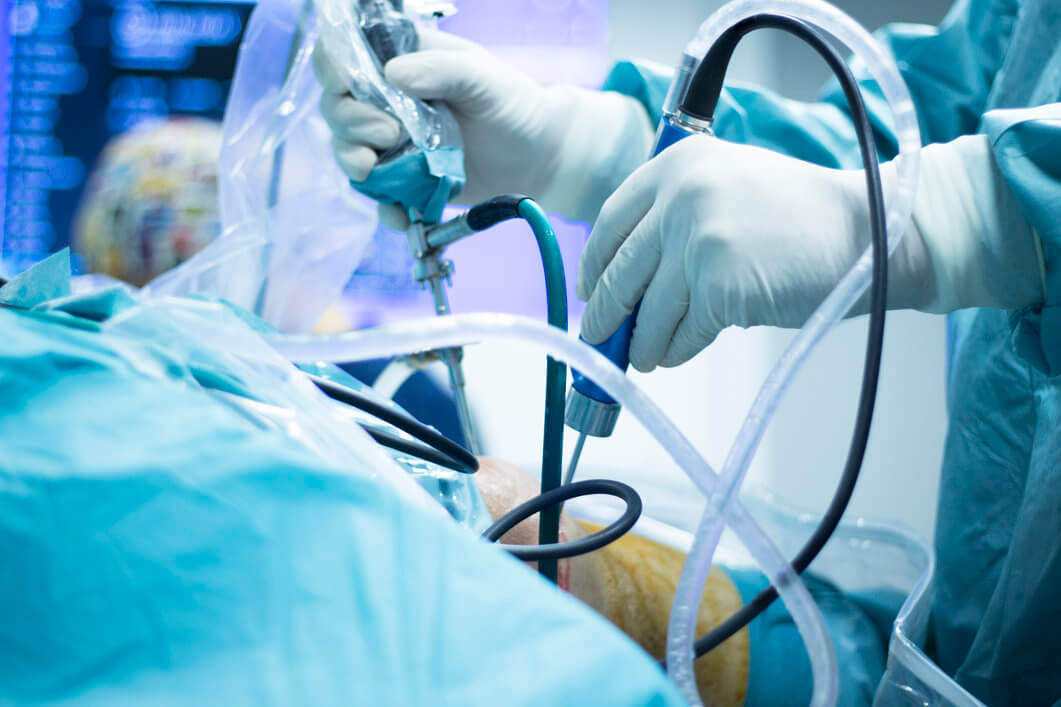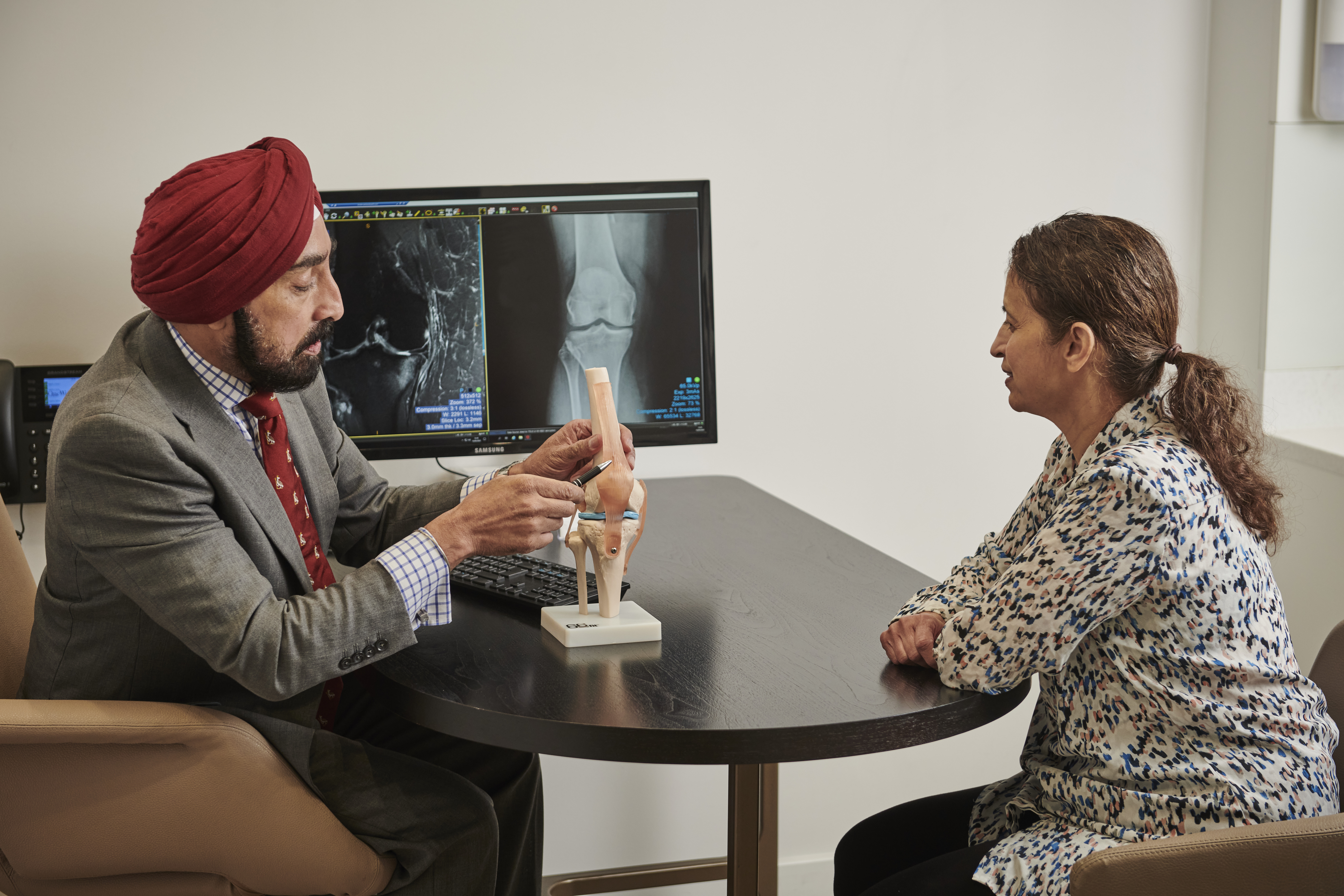Arthroscopy is a surgical procedure also known as “keyhole” surgery. This may be carried out either under general anaesthetic or sedation with a nerve block, depending on the joint in question. Both the surgeon’s and the patient’s preference will be taken into account along with any co-existing medical conditions.
What happens during a private Arthroscopy?
Private arthroscopy at OneWelbeck is considered a minimally invasive surgical procedure. A needle is inserted into the joint and a watery solution known as irrigation is allowed to flow in and create a space. A small incision is then made through the skin and underlying soft tissue layers and then a special camera known as an arthroscope is inserted through the hole.

Why should I have a private Arthroscopy?
With private arthroscopy, it is possible to perform a thorough visual examination of the joint from the inside. If necessary, the surgeon may perform a repair to any damaged structures found. For example, it is possible to trim cartilage that may be showing wear and tear. It is also possible to repair the soft tissue structures that make up the joint, such as frayed or torn tendons.
What are the benefits of Arthroscopy?
The use of arthroscopy avoids making a big incision and therefore has the advantage of causing comparatively little tissue damage during the operation. This makes for a faster recovery time than if the joint was surgically opened and leaves only tiny scars.
In theory, just about any joint of a reasonable size can have an arthroscope placed inside it.





